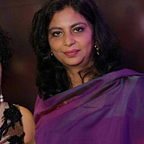Is An Over-Emphasis on Individual Genius Trivialising Fashion?
Fashion is celebrated the world over as a form of creativity. However, its categorisation into ‘Art’ or ‘Design’ is problematic, considering it doesn’t neatly fit into either, falling short of the terms used to define both these concepts. This makes us question if fashion is not really art (in the more contemporary sense of it being an object created with abstractions and complexities, that those engaging with it, need to work through in order to understand the work and the issues it embodies); and it’s not really design (in the sense of it not really ‘resolving’ any ‘real’ human need or problem), then what is its significance? Fashion is definitely of significance. It brings together different forms of creativity, creativity in conceptualization of ‘dress’ and ‘identity’, creativity in dressmaking, originality, embracing change, increasing social latitudes and being inclusive, craftsmanship, storytelling and presentation, creativity in brand building, marketing and energizing demand, creating value chains that employ different levels of skills and creating cultural capital. In essence, it is a system of innovation that extends itself from individual genius to economic, social and cultural enrichment.
As a system of innovation, it holds great promise, for all the reasons mentioned above. Yet, it also has a flip side. New conceptualizations of dress and identity are presented with such frequency, that it seems that the system has been reduced to a perversion…of simply creating the next new thrill. This has been lowering on so many levels: the looks themselves are more often than not, deliberately atrocious and provocative, and have come to be simplistically read as a sign of creativity and originality, especially when they find a semblance of resonance in scholarship: “Whenever you have designers who are doing something that’s significantly new, it’s going to look, for the most part, strange and possibly ugly at first.”- Valerie Steele. Furthermore, fashion design in the guise of artistic genius- but with clear commercial objectives- has abused dress (its primary muse), by making it a thing that can be discarded and replaced by the next ‘new’. It has gone a step further as Alessandro Michele, Creative Director at Gucci recently pointed out, “I’m not interested in clothes, I’m interested in the person wearing them.” This replaceability of dress and the relegating of it in favour of the hotter topic of identity- are more often than not, shifts engineered to make a recurring and ever-exceeding ‘innovative fashion statement’! A premium is put on individuality and self-expression, rejecting any objectivity by which value or merit in the product/art may be assessed. If it is a system of innovation, we should ask if the innovations proposed have had adoption at scale, impact, lasting influence, and enduring economic and social benefits. Given the current state of the fashion industry and the issues and controversies it is surrounded by, on all these fronts, the answer is a sheepish ‘no’. Is creativity in fashion then, misguided and misdirected? Has its system of innovation been directed towards frivolous aims?
Fashion doesn’t care for criticism; it seeks followers not perfection. Yet, it’s this very arbitrary status of creative work in fashion, that refuses to be kept in check by ideas of good and bad, that makes fashion evasive. If anything goes, what makes some works better than others? What should guide our tastes in clothing? Why should I follow fashion if the individuality that it’s presenting is not better resolved than my own awkward sense of style? Why do I need fashion at all if it’s not going to be directional? Fashion can often get imprisoned in its own absurdities. For all its claims to creative expression, it has become a trope that anyone can use flippantly and without any sense of accountability. While individuality is the essence of creative work, the individuality must be reviewed and evaluated. It cannot assume the mantle of genius, if it hasn’t been subject to exposure, scrutiny and been ripened in ‘the sun’. Where there is expression, there must also be an ideal that must be achieved in and through the expression. Where there is originality, there must also be awe-inspiring form. Where there is a claim to inclusivity, there must be clear evidence of such inclusivity being a truly personal value, not an attention-grabbing antic. Where there is an intention to celebrate identity, it mustn’t be distastefully put ‘on show’ as a publicity-garnering gimmick.
If the individuality of the designer, his own preoccupation with his celebrity status, him becoming the mascot of his brand, of being immortalized as a creative genius- become central concerns, fashion is trivialized. It claims to have a special status, because it is subversive and not interested in rules. But the real moral question is, as a system of innovation, is it okay for it be appropriated to disproportionately benefit the ‘celebrity designer’, or should its benefits be more widespread through society? Fashion needs to stop pretending that it is art, when asked about its economic viability or questioned about its lack of social and cultural prudence. Conversely, it also needs to stop pretending that it’s about society, when it’s so often childishly created on nothing more than individual whims. Fashion needs to grow up. It needs to fill in the shoes of a more responsible, larger figure. It needs to learn to cut the fabric of our everyday lives in shapes, silhouettes and styles that are a proper fit to our developed minds.
